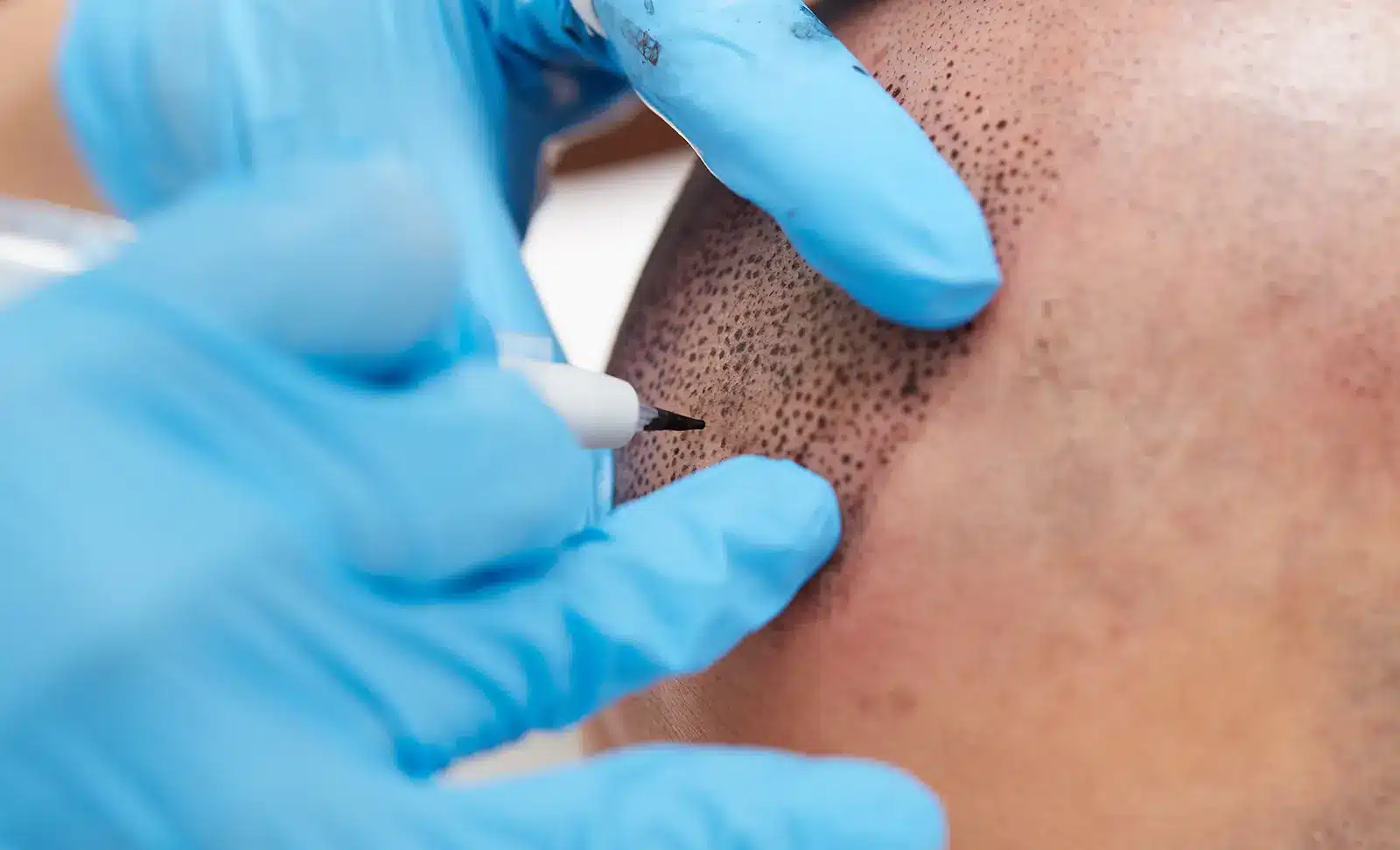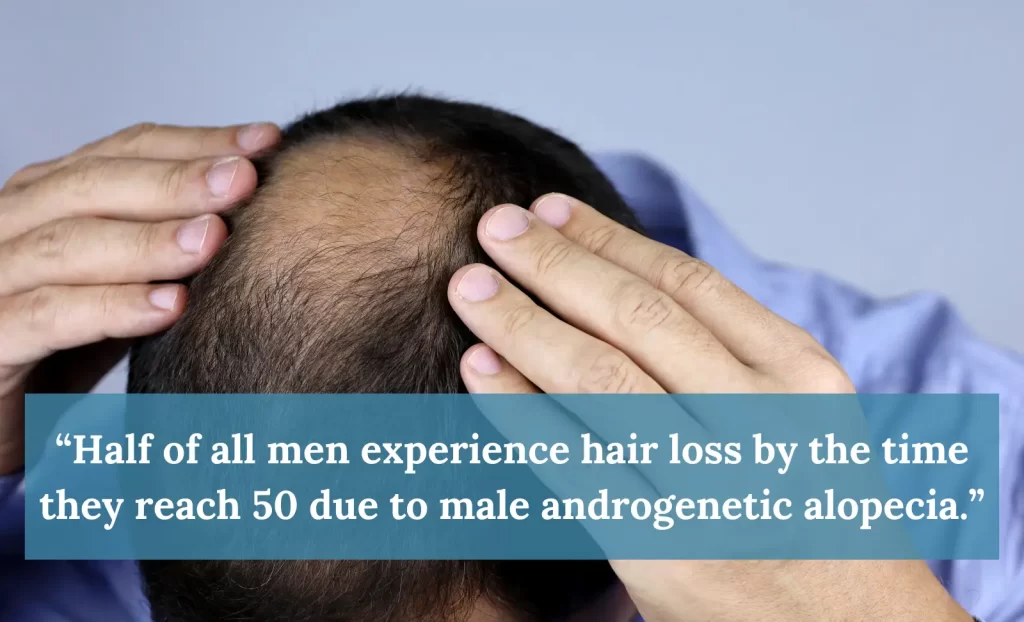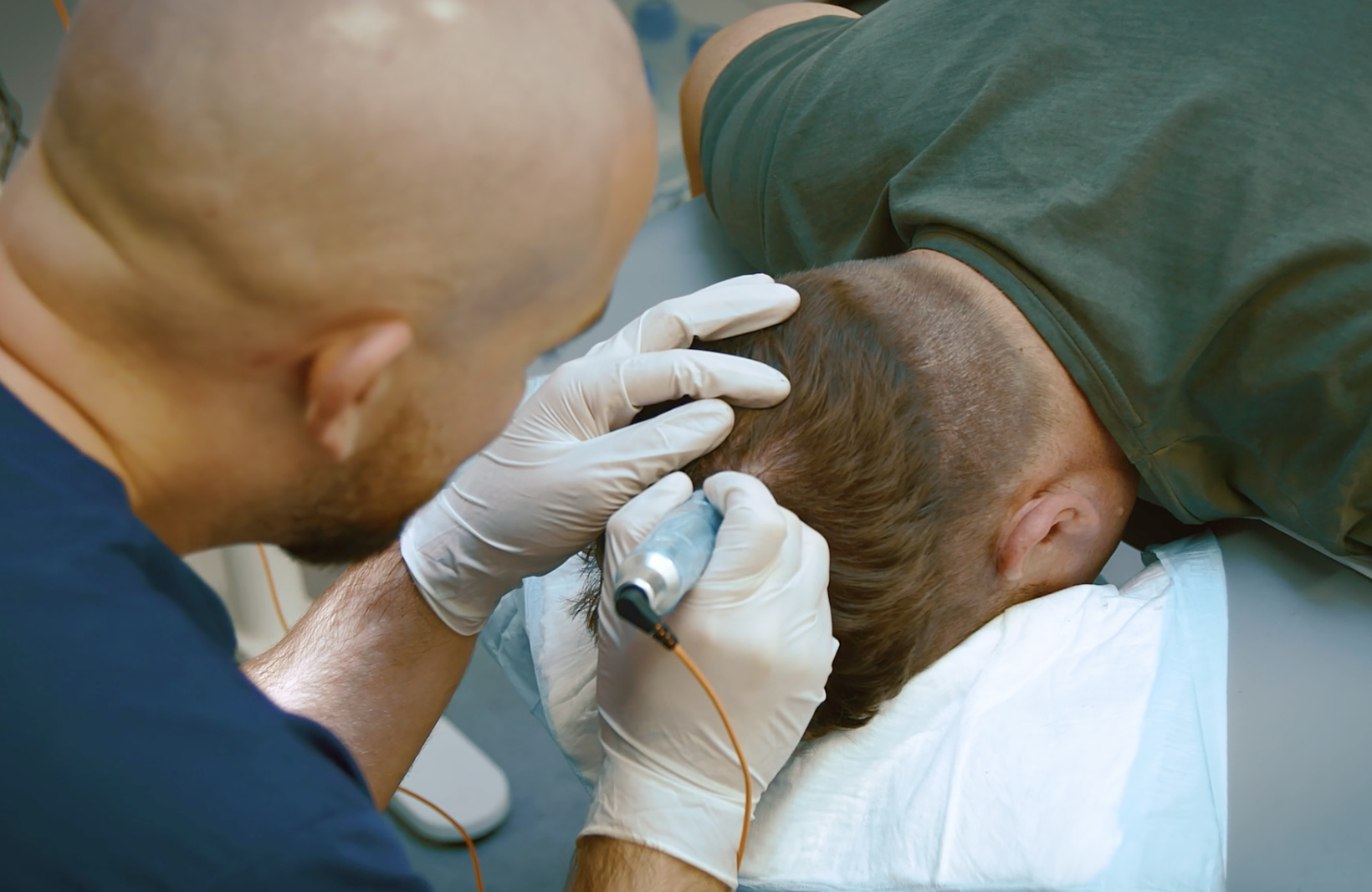There are several cosmetic procedures that aim to give the appearance of fuller, thicker hair. Considering healthy hair is considered to be more attractive around the world, this is no surprise. Not to mention the fact that up to half of all men experience hair loss by the time they reach 50 due to male androgenetic alopecia. [1]
One treatment for hair loss is scalp micropigmentation, which you can learn all about right here.
What is Scalp Micropigmentation?
Scalp micropigmentation is a cosmetic procedure that uses permanent makeup to give the appearance of short hairs on the scalp or beard. The process uses very thin needles and pigment (ink) on the area experiencing hair loss. The technician makes small dots in the area, which look like very short hairs. It is also known as a hair tattoo, but it differs from traditional tattoos as the pigment does not go as deep and the finished appearance is of natural-looking hair (rather than an image).
The Benefits of Scalp Micropigmentation
Here are just some of the reasons people get scalp micropigmentation:
It Produces Natural Results
While scalp micropigmentation SMP does not lead to natural hair growth, the results can look extremely natural, especially if you choose a reputable clinic with plenty of experience.
It Can Hide Scars
Some people have scarring on their scalp. Not only does scalp micropigmentation give the appearance of short hairs, but it can also hide those scars, giving the patient an extra boost of confidence.
A High Success Rate
It’s rare for the pigmentation not to take—most people who undergo scalp micropigmentation experience immediate results.
It is Easy to Maintain
Once you get scalp pigmentation done, you do not have to worry about upkeep. It’s simple – you receive the treatment and then go about your daily life. The only thing you might want to keep up with is keeping your head shaved, as the areas with scalp micropigmentation will not be able to grow natural hair.
It is Long Lasting
Scalp micropigmentation can last several years – usually up to six. There are ways to extend the longevity as much as possible, including following all aftercare instructions, moisturising the scalp regularly, and staying out of direct sunlight as much as possible.
It’s Not Too Painful
Scalp micropigmentation is not usually painful. It’s much less painful compared to traditional tattoos as the needle does not go in as deep. Most people can tolerate it just fine, with only mild discomfort in some cases.
It Boosts Self-esteem
Losing your hair is always hard, whether it’s due to cancer treatments, androgenetic alopecia, or stress. Scalp micropigmentation is beneficial as it can restore a person’s confidence – the results can look incredible, giving a real boost of self-esteem. It’s important not to underestimate how important having good self-esteem is, as it can influence every aspect of a person’s life, from their mental health to their relationships.
How Long Does Scalp Micropigmentation Take?
The procedure takes one to five hours, depending on the coverage needed. If someone has a slightly receding hairline and wants the scalp micropigmentation treatment to fix that, it will probably involve a short one-hour session. On the other hand, if a person has experienced significant hair loss and needs fuller coverage, it could last five hours. It varies depending on the person and the results they want.
What Are the Side Effects?
Scalp micropigmentation is a relatively low-risk hair loss treatment. However, there are some side effects to keep in mind, such as:
- Redness
- Swelling
- Itchiness
- Fading
- Large Dots
- Discoloured Dots
- Swollen Lymph Nodes
Some of these side effects are more serious and unpleasant than others. A little redness and swelling following the procedure are to be expected. However, seeing that you have large or discoloured dots on the scalp can be extremely disheartening, and this usually occurs when you pick the wrong clinic. It’s important to research when choosing who does your scalp micropigmentation. Look into how much experience the technician has and the results from their past customers.
Scalp Micropigmentation: What to Expect
Do you want to undergo scalp pigmentation? Here is what to expect at each step.
Consultation
Before anything else, you will be invited for a consultation. The practitioner will walk you through the process and ensure you are a good candidate for the treatment. It’s also a chance for you to ask any questions. Remember that the consultation is also about deciding whether to go ahead with the SMP hair treatment – you must be careful with which practitioner you choose, as you want natural results.
The Treatment
After a consultation, you will be invited in for the treatment. Most people require a couple of sessions, so do not expect full results after a single session (unless told otherwise). You will receive a topical anaesthetic beforehand to minimise discomfort. The practitioner will choose an ink that is the same as your hair colour and then deposit that pigment into the scalp using a tiny needle. It will create small dots that look like existing hair follicles.
Aftercare and Healing
Your practitioner will give you detailed instructions about what to do to heal. For example, you’ll likely need to avoid washing your hair for a few days, avoid harsh products, and stay out of the sun. The healing process may produce some side effects like swelling and redness – this is normal. Contact your practitioner or medical professional if you have any concerns about the healing process.
Results
You will likely need several sessions for full results. However, the results are immediate – you can see the dots as soon as you receive the applications.
Is Scalp Micropigmentation Right for You? What to Consider
Scalp micropigmentation is highly beneficial for some but is not the best method for everyone. Here is what to consider before opting for this treatment.
Your Preferred Hairstyle
One of the drawbacks of scalp micropigmentation is that it only works for one type of hairstyle: the buzz cut. If you prefer longer hair, this option isn’t for you. Instead, another hair loss treatment, like hair transplantation, would work better, which we’ll go into further down the road.
Other Potential Treatments
Have you considered other treatments? It’s typically best not to choose a hair restoration treatment until you have researched a couple, as you might find another one that suits you better, whether that’s PRP injections, low-level laser therapy, or a hair transplant. There are also hair loss medications like minoxidil that can boost hair growth.
Issues with the Scalp
If you have scalp acne, scalp psoriasis, or any other condition affecting that area, getting SMP may not be the best option, as the treatment may only exacerbate symptoms. Plus, it may be difficult for the practitioner to safely apply the pigment in these cases.
Your Type of Hair Loss
If you have experienced thinning or full hair loss, consider what is causing it. In some cases, the cause is reversible, such as telogen effluvium, and you would be better off treating that rather than covering up the thinning areas with a semi-permanent tattoo.
Whether You Can Handle Needles
The scalp micropigmentation treatment process can take some time and involves tiny needles. Make sure you are okay with handling that before picking it as your hair restoration treatment option.
Your Skin Type
Your skin type may determine whether or not you can get scalp micropigmentation. For example, those with sensitive skin may not be the best candidate for the procedure.
What About a Hair Transplant?
If you have realised scalp micropigmentation is not right for you, whether you prefer longer hair or have sensitive skin, another option to look into is a hair transplant.
The FUE hair transplant is particularly effective. The process is quite simple: the surgeon harvests individual hair follicles from the back or sides of the scalp. Then, they plant those same follicles into the problem area of the scalp. These follicles then take root and grow new hairs, leading to fuller, thicker hair.
While it’s more invasive than scalp micropigmentation, it’s one of the least invasive surgeries you can get, with a very high success rate. If you are interested in learning more, download our hair track app.
Final Thoughts
Scalp micropigmentation is an effective solution for giving the appearance of full hair. It is specifically for people wearing a short hairstyle like the buzzcut, as the dotted hairs cannot grow. When done by the right practitioner, the results can look wonderfully natural, giving confidence back to the patient.
Are you more interested in a hair transplant? It’s a very different procedure but also produces excellent results. Head over to our patients gallery to see what results you can expect.
Sources:
- https://www.ncbi.nlm.nih.gov/books/NBK278957/




